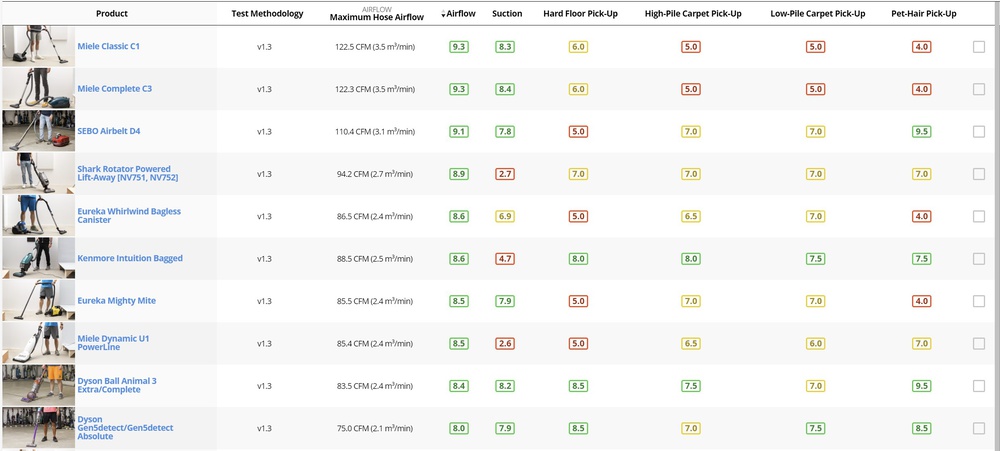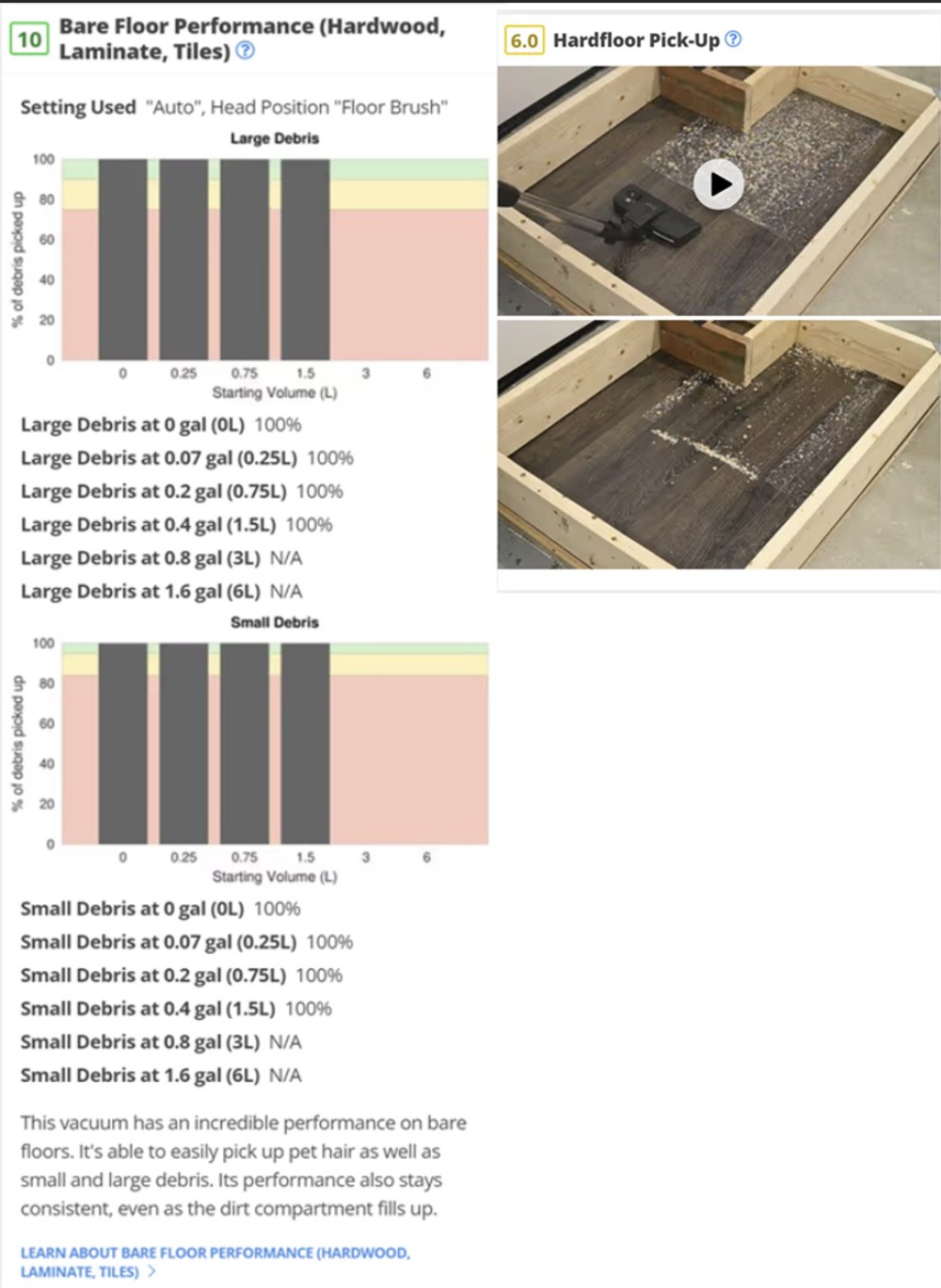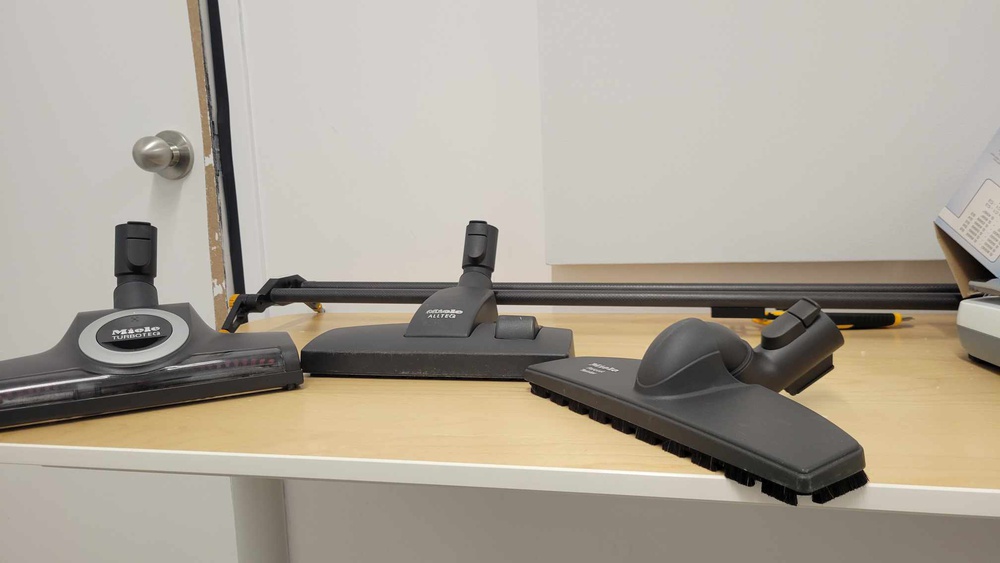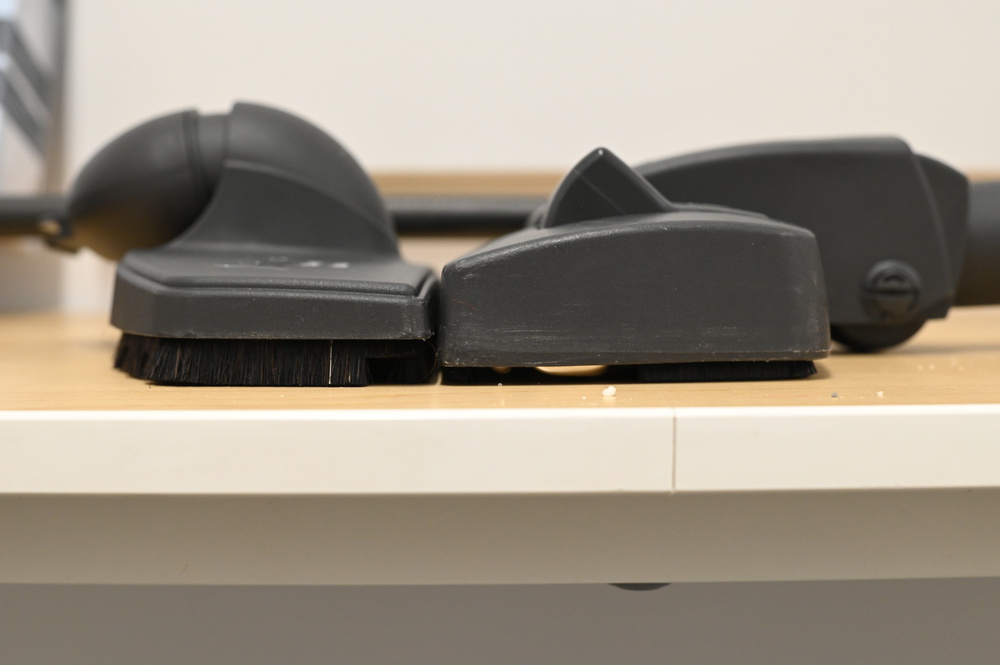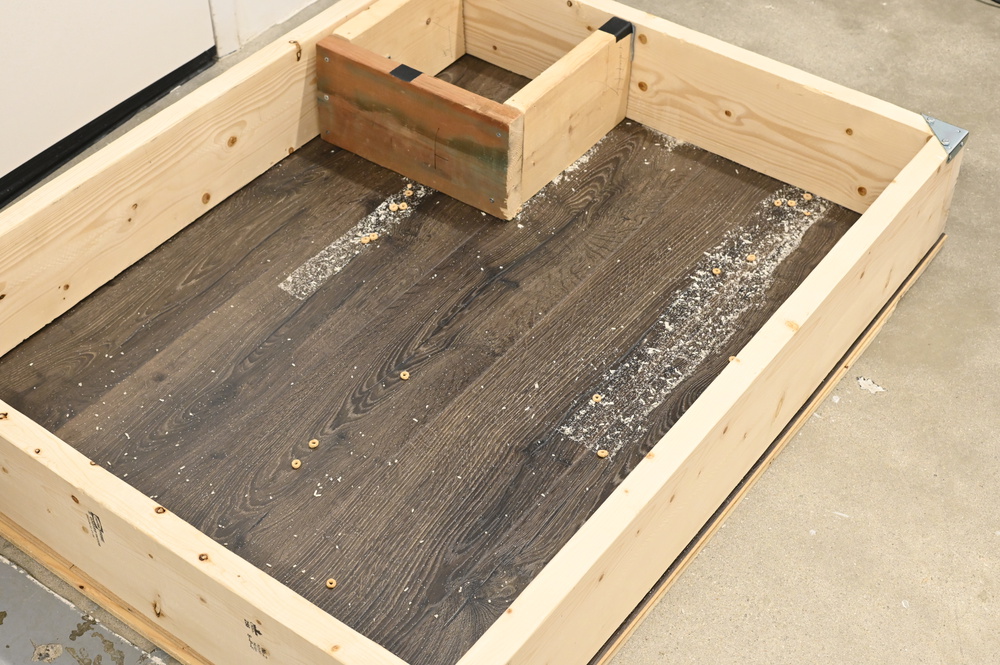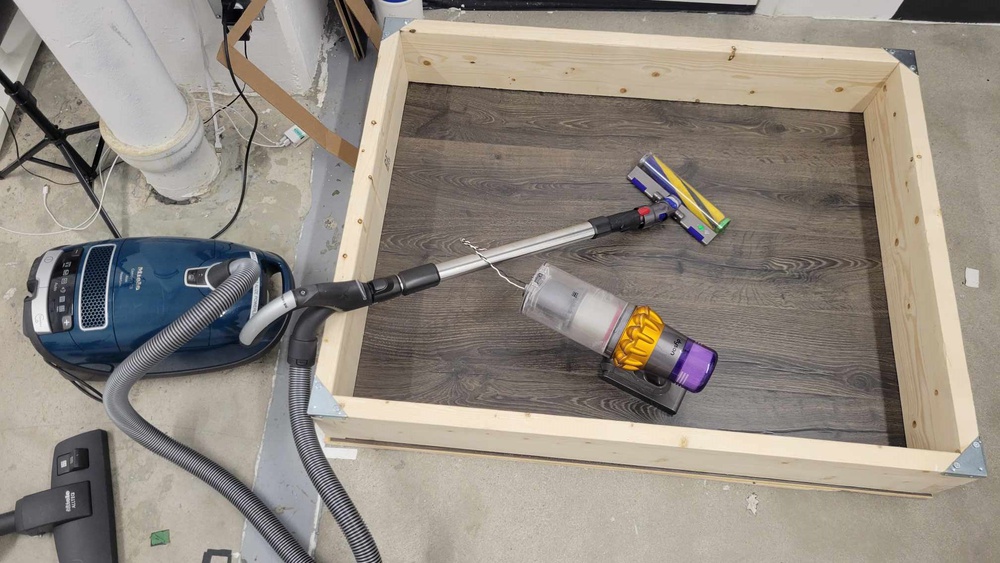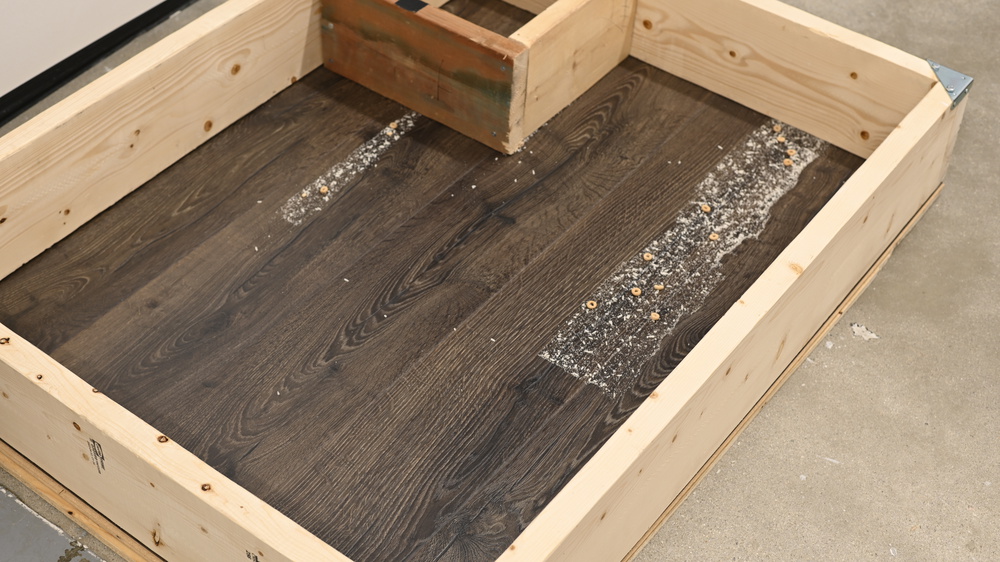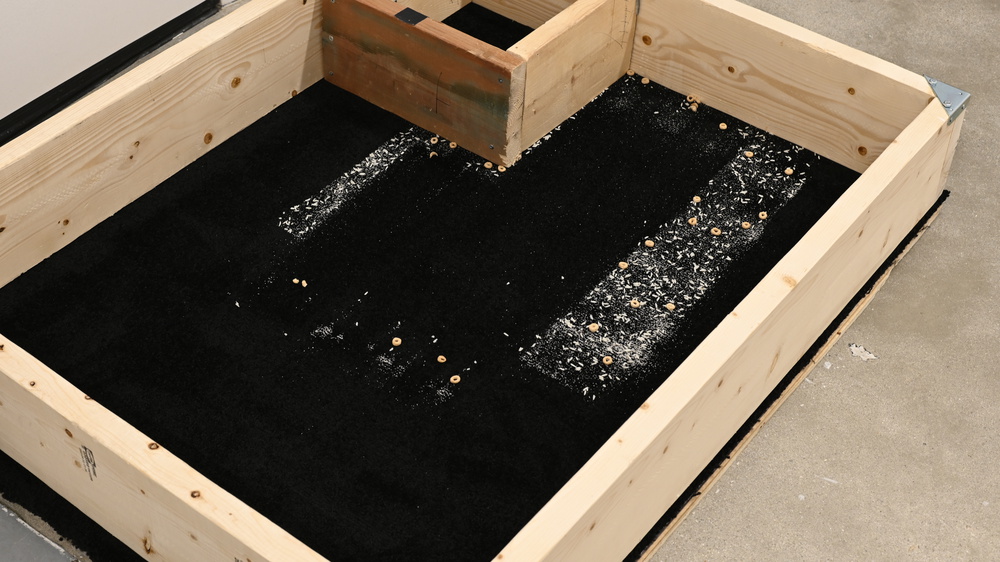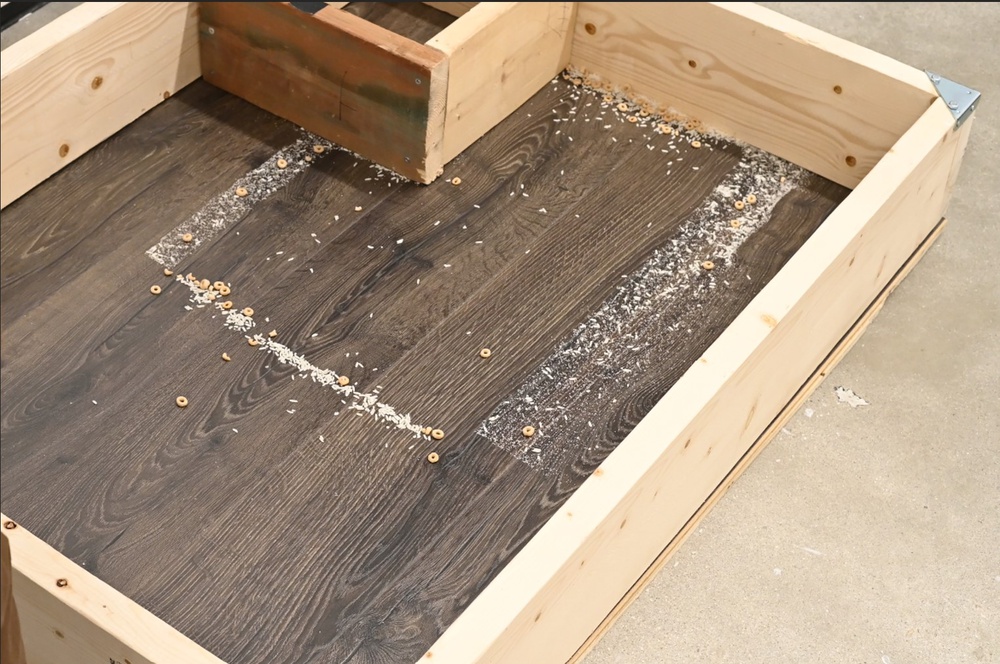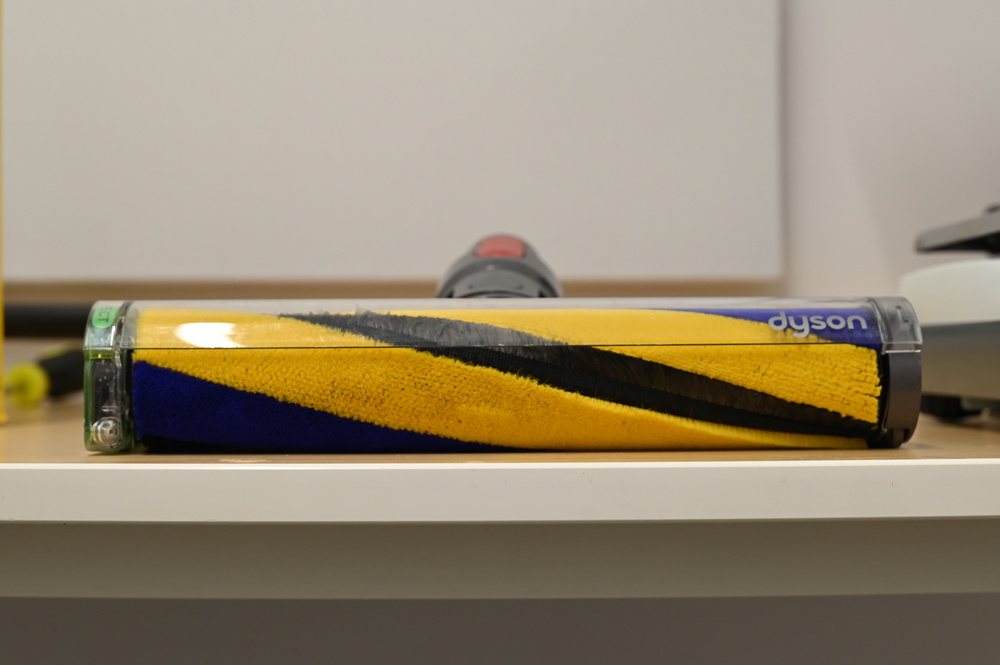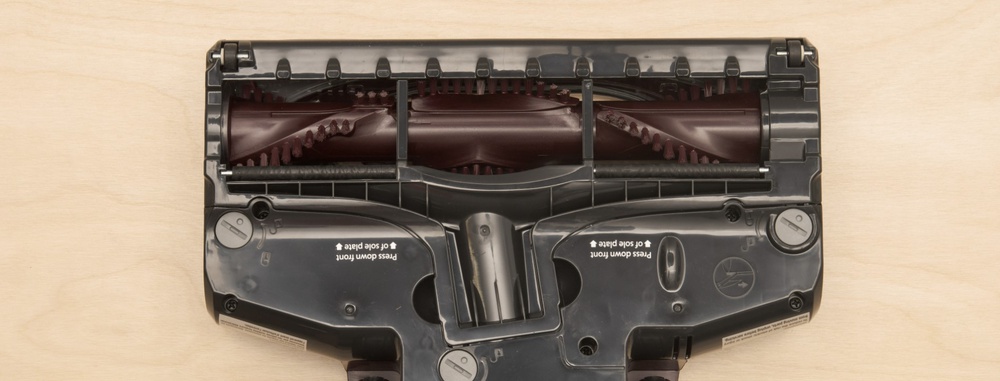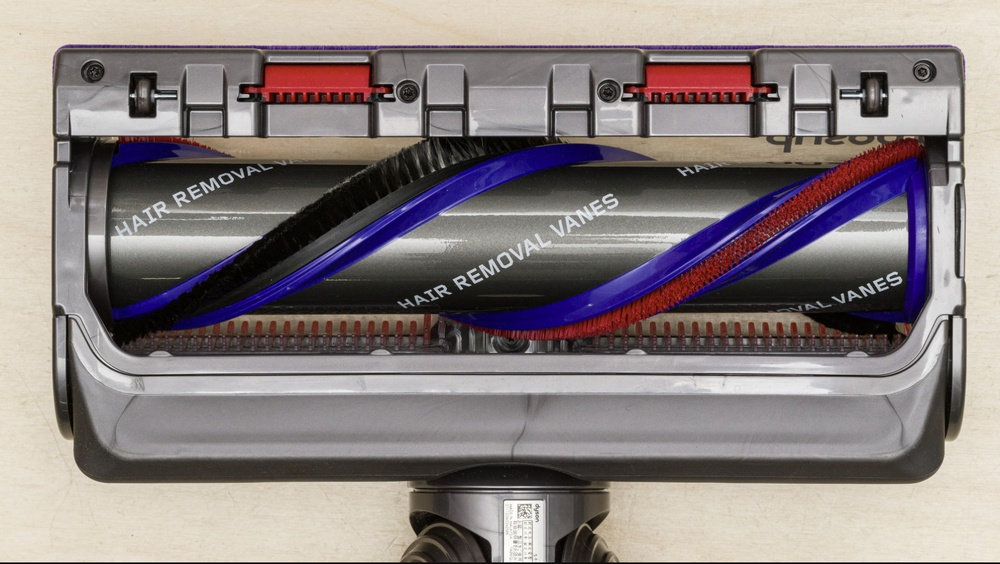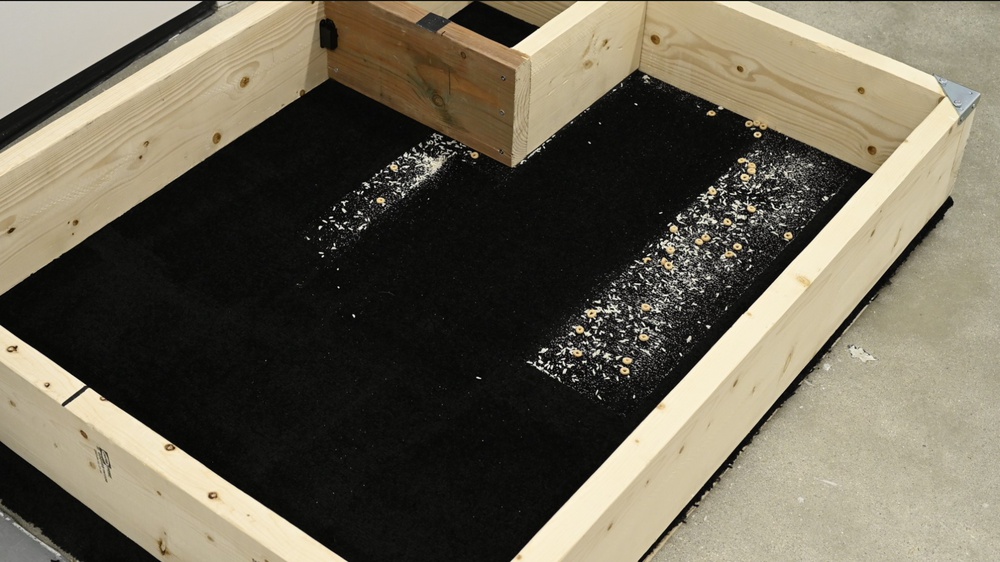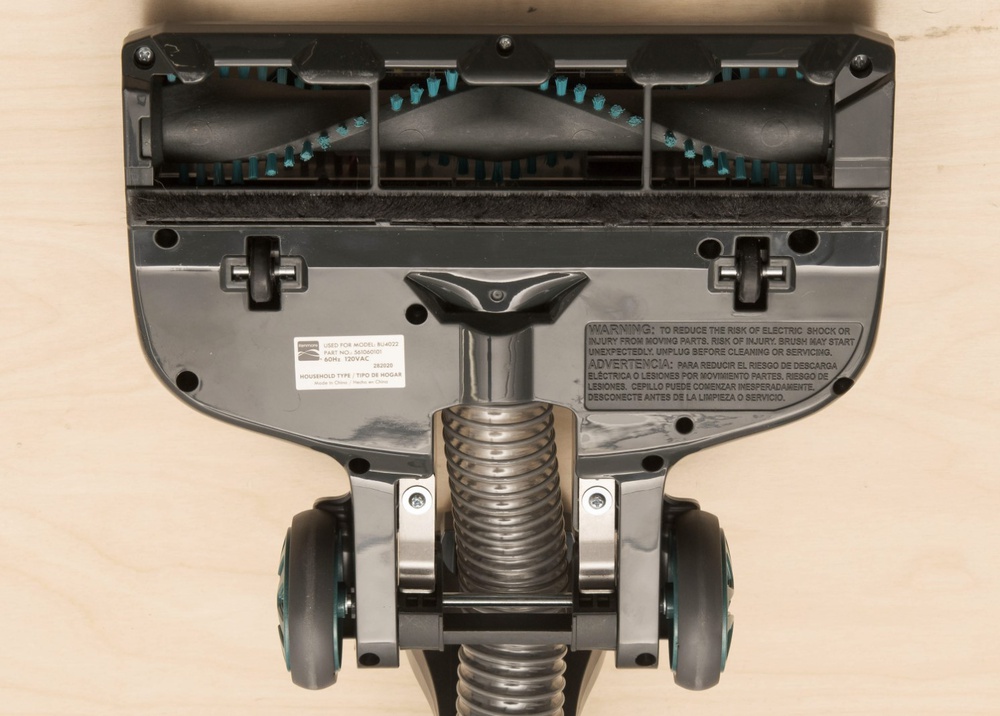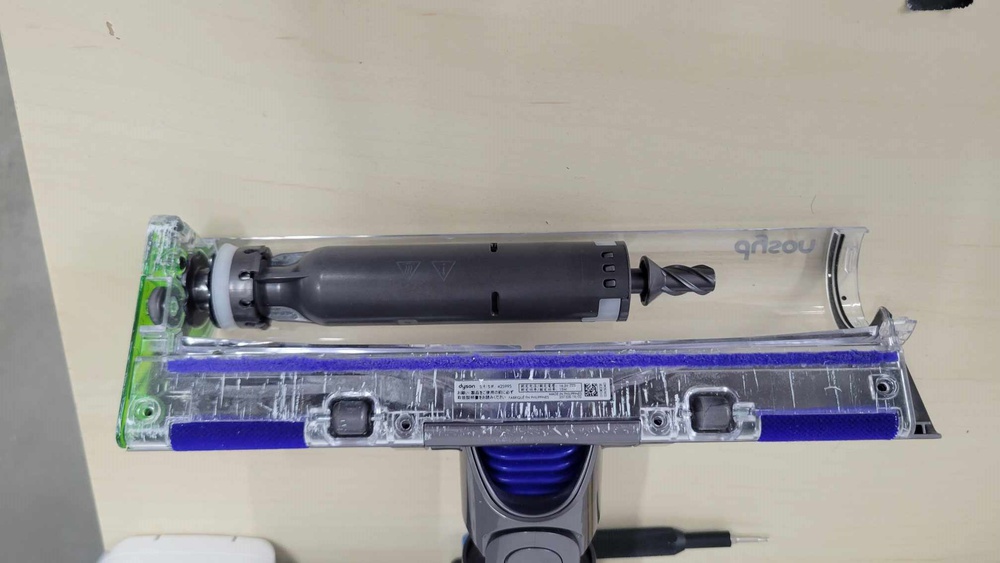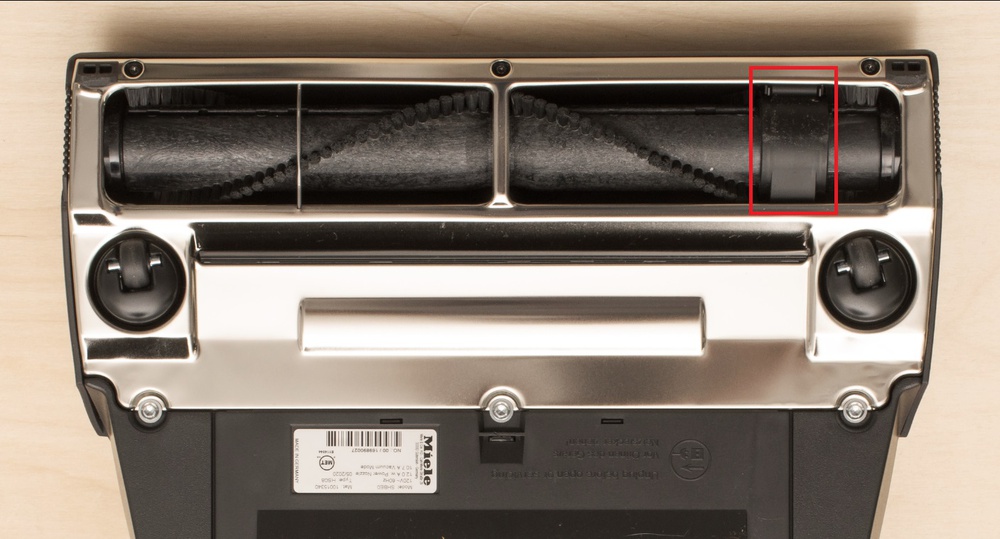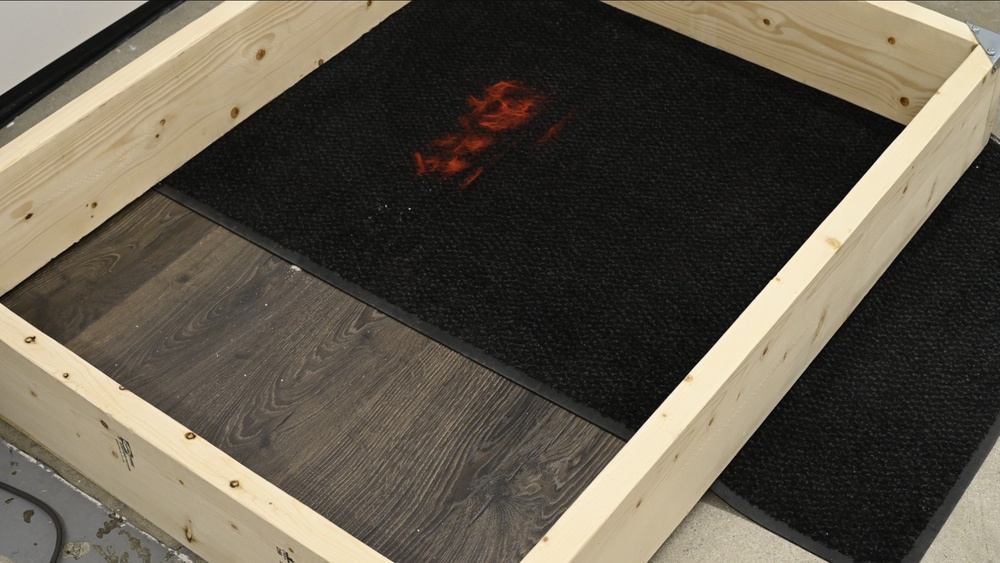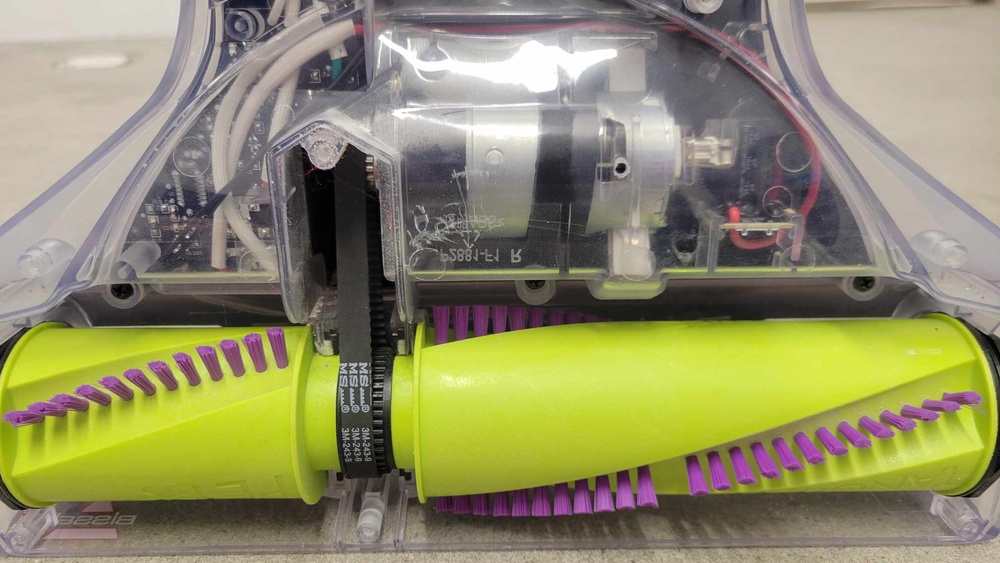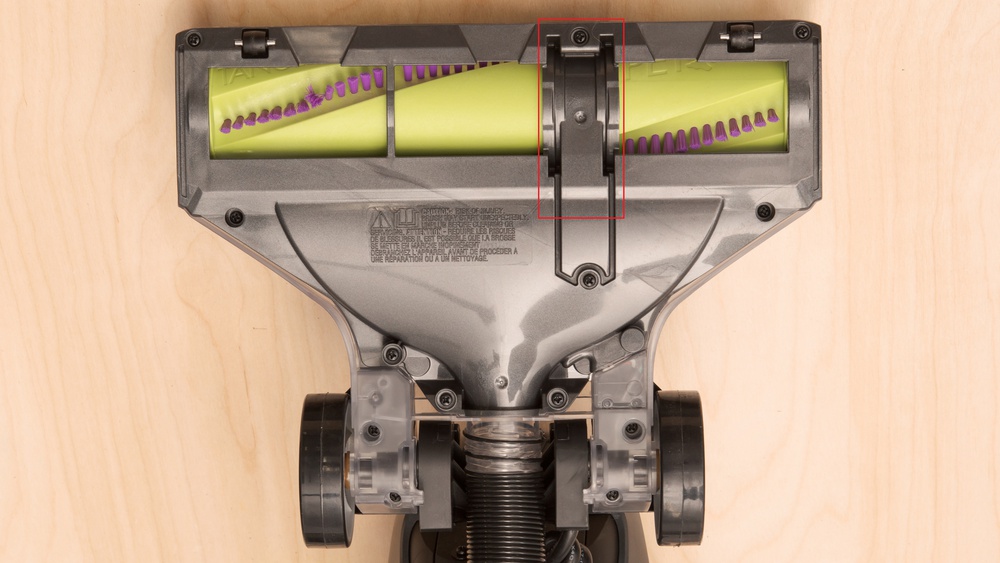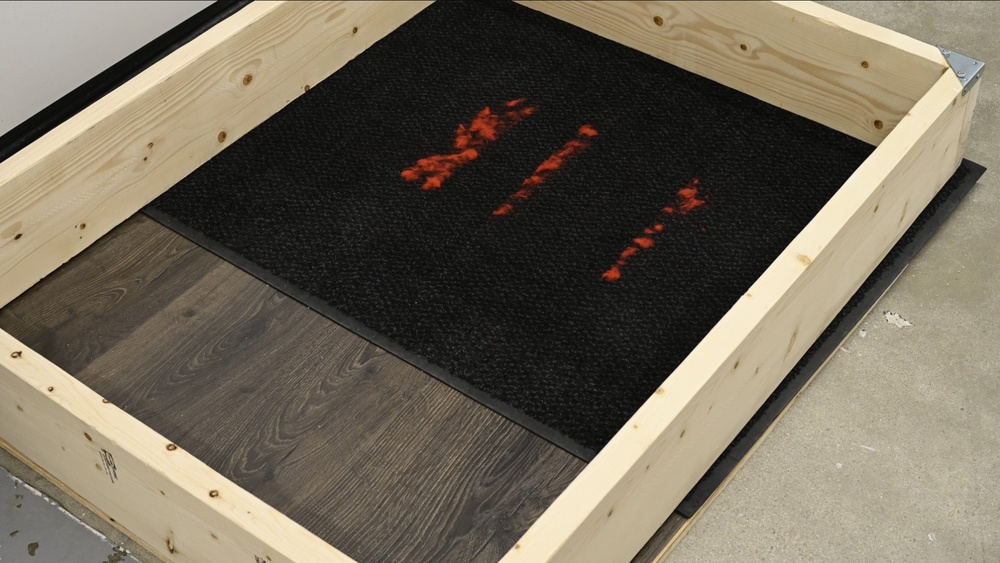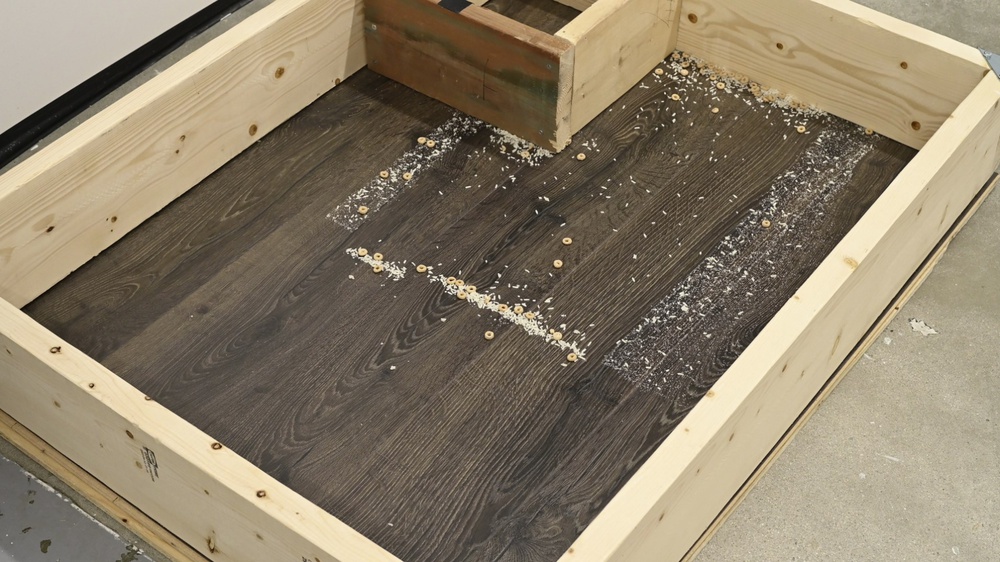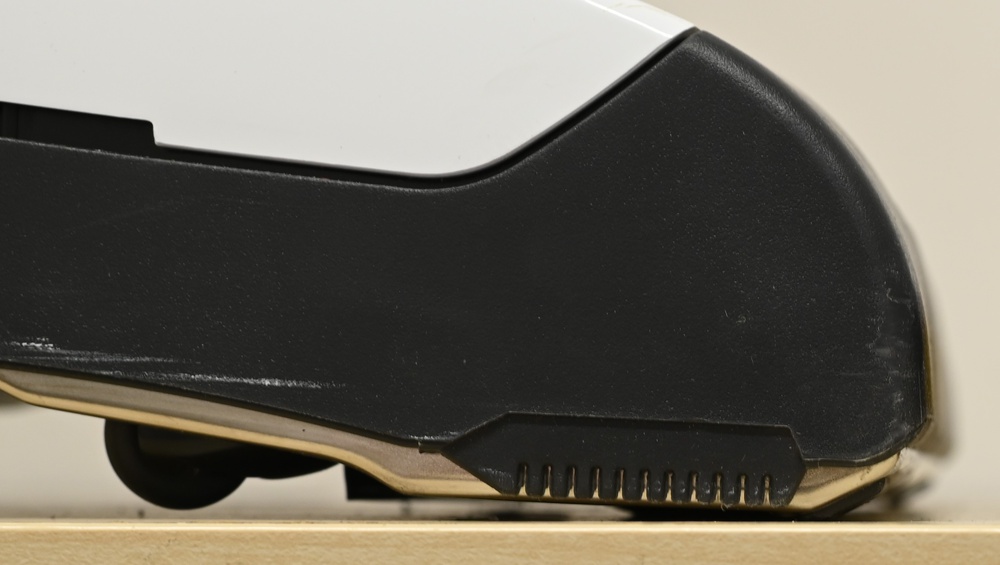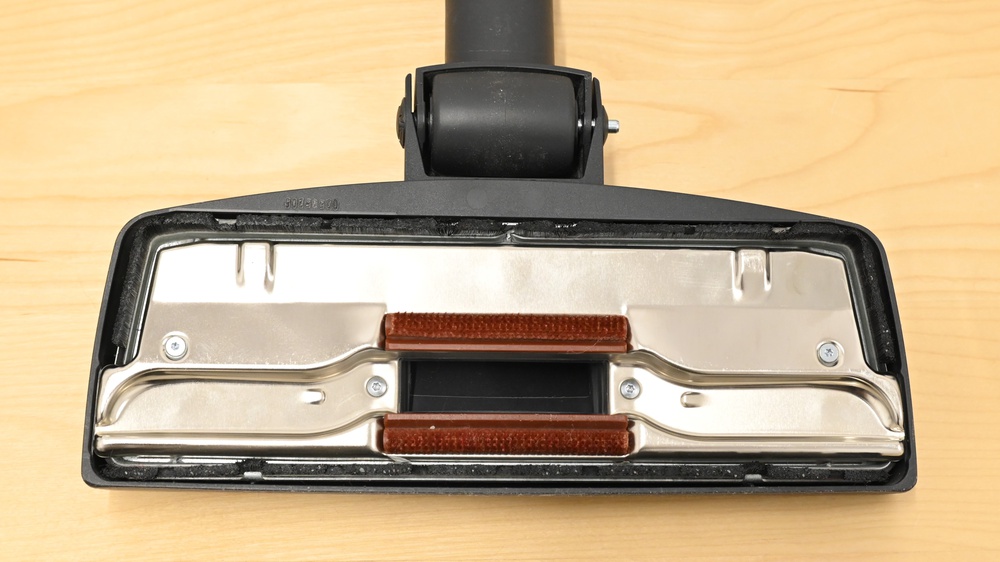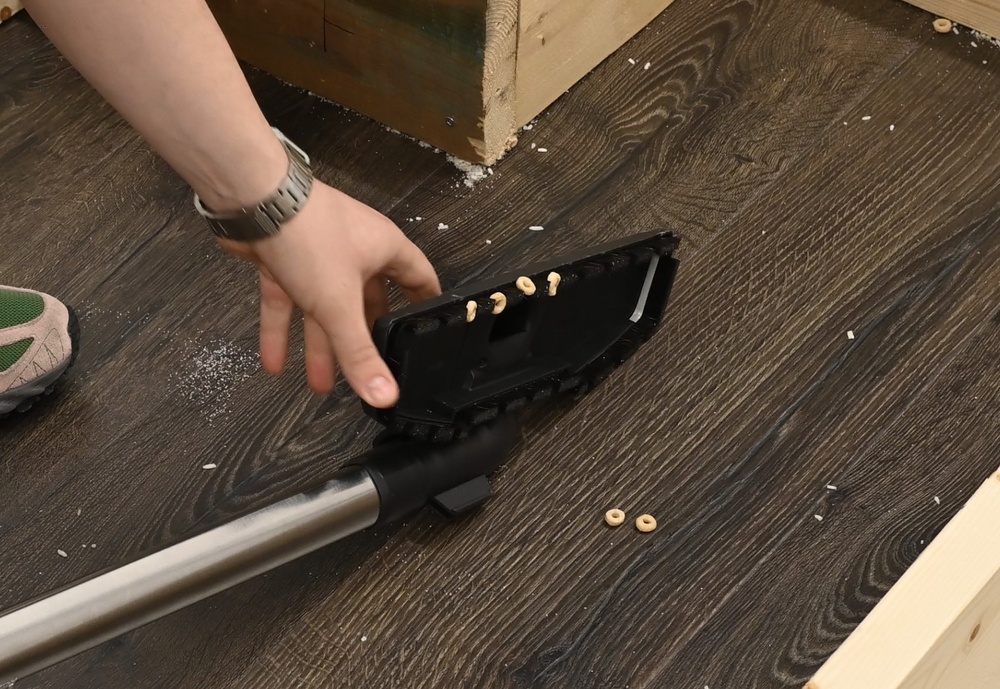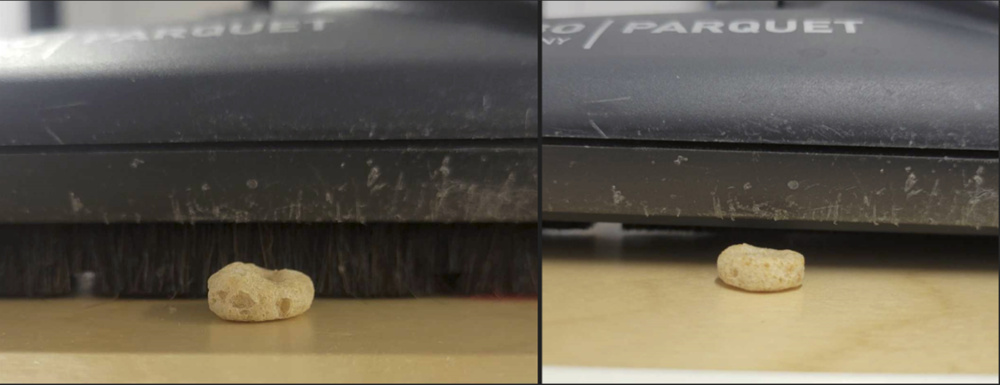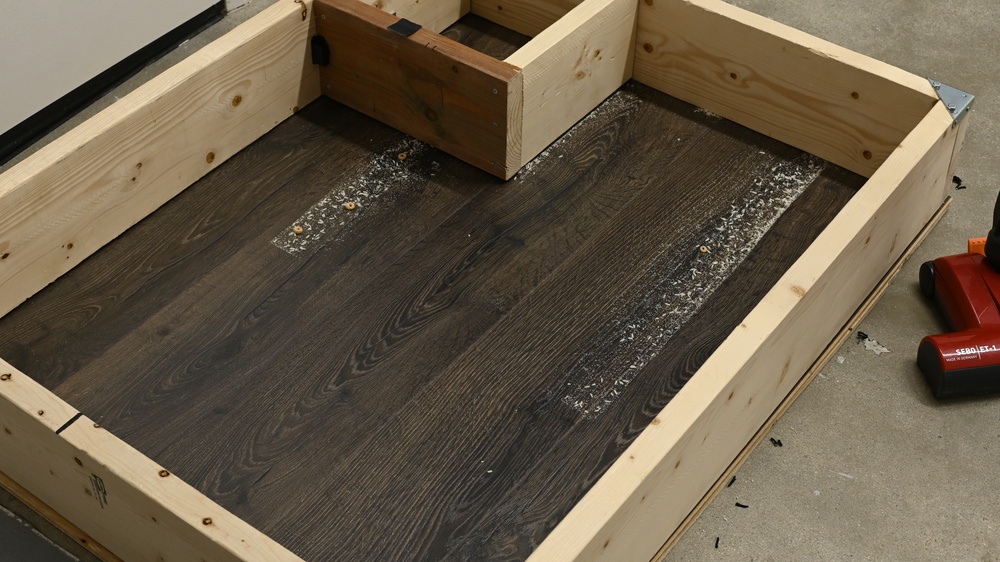Forget Airflow And Suction
For Vacuums, It's All In The Head
We can confidently say that most households have a vacuum cleaner, but choosing the right one to buy can be hard since knowing what to look for can be confusing. Should we look only at airflow and suction values, or is there more to it? This article aims to ease the selection process for your next vacuum and answer that question.
While looking at our results, we didn't see a clear indication that higher airflow and higher suction resulted in a vacuum that did a better job of picking up a mix of debris sizes.
After our test, we realized that the ones that performed the best on a hard floor had a soft roller head. On the other hand, vacuums that didn't perform well on hard floors could do so due to their antiquated head design. In this article, we dive deeper into vacuum head design, how it impacts performance, and how it could impact maintenance.
Don't Just Rely On Airflow And Suction
Why Choosing The Right Accessories And Head Is More Important than Raw Performance Values
During our data validation, we realized that Miele canisters considerably dropped in score compared to Vacuum 1.2. This is due to a couple of differences in our testing. We chose to investigate this drop in score with the Miele C3. This vacuum used to score a ten on our hard floor test, but now it scores a 6.
One of the main reasons for this drop is that we no longer lift the head. We made this decision to compare vacuums on the same playing field. Most will lift the head when they vacuum to help with larger debris, but some vacuums have heads that don't require lifting to deal with this type of debris. Following this logic, why would a vacuum requiring its user to lift the head to achieve the same result get the same score? With this performance update, we wanted to highlight the strength of each head by pushing them to their limits. Having a different way to vacuum to compensate would hide better head design that would make for easier vacuuming.
To further confirm this change in score, we tested the Miele C3 with different heads to compare their differences. Different results would confirm our hypothesis that a vacuum's debris pickup performance is only as good as its head design. We proceeded to test with the SBD 285-3 AllTeq, the SEB 300-3 Parquet Twister, and the STB 305 TurboTeq. Both the SEB 300-3 and the STB 305 are official Miele heads that we purchased separately, and the SBD 285-3 is the head that came with our Miele C3.
Using the SBD 285-3 AllTeq head, the results were looking pretty bad. As you can see here, most big debris, like rice and Cheerios cereal, were pushed up to the wall.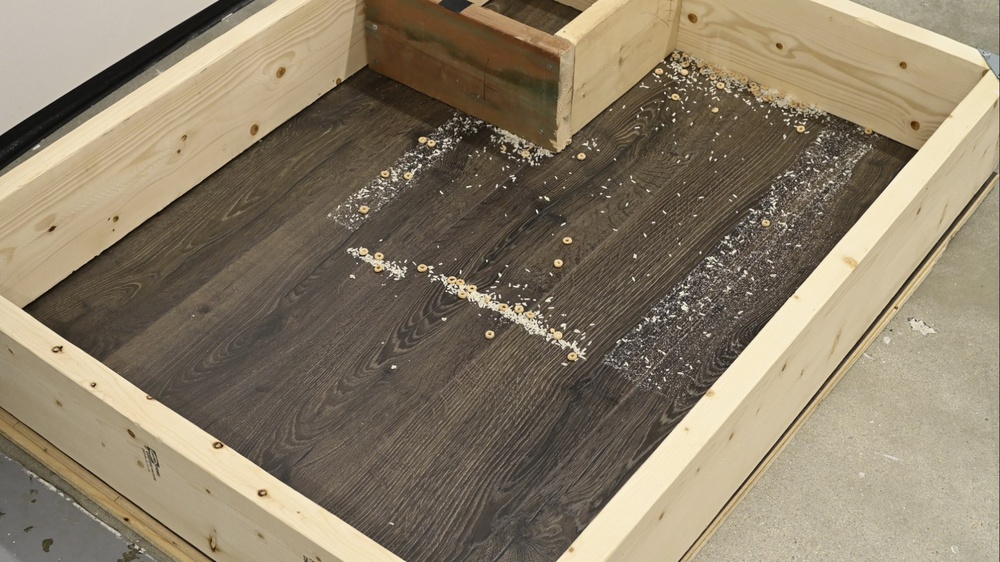
The SEB 300-3 Parquet Twister head is the second official head we tested on the Miele C3. The parquet twister head is higher than the stock Miele C3 head and has bigger openings in its bristles. This photo shows the difference between the two heads.
The photo below is the post-test result using the parquet twister head. The results are better compared to the SBD 285-3 head. There's still large debris, but there's practically no more small debris.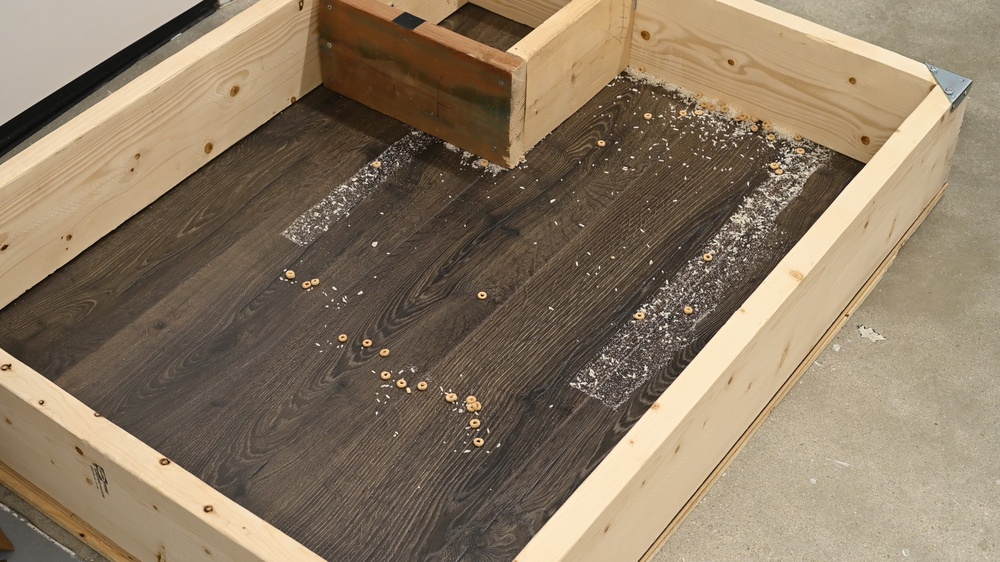
The last official head we tried with the Miele is the STB 305 TurboTeq. It's an air-driven brushroll head. It's designed for carpet use, but we tried it on the hard floor as an experiment. This side-by-side shows the different design from the AllTeq head.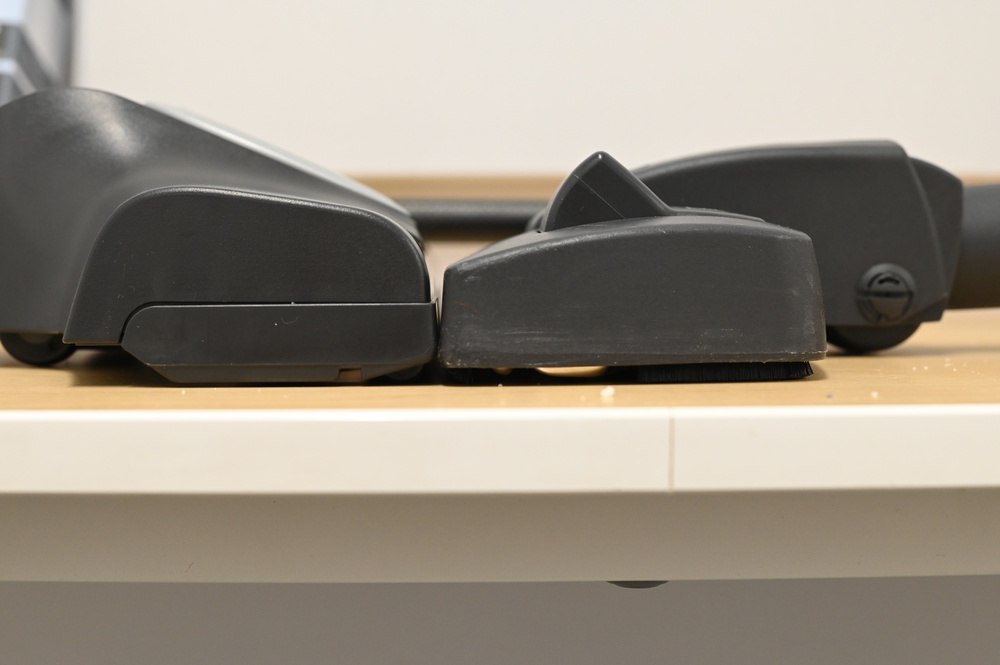
The test results for the TurboTeq head are the best so far when dealing with large debris. Despite the fact that it projected quite a lot of debris backward, it's still better than the other two Miele heads.
Using three different official Miele heads showed us that the head design played a large part in determining debris pick-up. The AllTeq head was the worst-performing one due to its low profile and the stiffness of its bristles. The Parquet Twister showed a noticeable improvement in performance due to its higher profile, softer bristles, and larger slots. However, this head still struggled with large pieces of Cheerios cereal.
Finally, the TurboTeq head was the best of the three. We believe it performed better because the back of the head is higher off the ground to compensate for the low front, and the brushroll helps deal with bigger debris. The downside of this head is the large amount of debris that gets projected behind by the roller. This happened because the back of this head is higher and thus lets debris through. The debris projection was expected since this head is meant for carpets. With this head, we saw the importance of the soft rollers' low back profile.
These different tests helped us confirm that our test, although more difficult for the vacuums to perform well, still gave us results that made sense within context. The results also helped us realize the importance of the design of the head. Without modifying our test, it would have been harder to directly compare head designs as we did.
Fitting A Soft Roller On The Miele C3: Creating The "Absolute Best Vacuum"
Following these different investigations on head impact, one question arose: what would the ultimate vacuum look like? This vacuum would boast the highest airflow that we measured and the highest suction, and it would have the head of the best-performing vacuum on a hard floor. We turned into Victor Frankenstein and fiddled with a soft roller from a V15 Detect and a Miele C3. Here's the setup we came up with:
The results speak for themselves. It's miles ahead of the "normal" Miele Complete C3 and is as good or even better than the Dyson Gen5 Detect with the same head. In the video, we struggle a bit because the vacuum is unwieldy, but it doesn't affect the end results in terms of performance.
We also did the same thing with the Digital Motorbar head to see if the performance gain on carpet would be as impressive. The picture on the left is from the test with the Miele C3 with its straight-suction SBD 285-3 head. There's a lot of debris on the walls, but we can see that the sand was lifted up due to the high airflow and suction. The picture on the right from the TurboTeq shows less large debris on the carpet than the SBD 285-3 but more sand, so the head might struggle to lift the small particles. The impeller in the head also slows down the air that's used to pick up debris.
This last photo is from a test using the V15 Digital Motorbar head on the Miele Complete C3. We can see that there's almost no debris accumulation near the walls. It did a very good job with the Digital Motorbar head compared to its normal head.
We did these experiments to further confirm our hypothesis on the importance of the head. The head matters, but the Miele is as good or even slightly better than the Gen 5, which could be due to airflow and suction. After observing these results, we attached the SBD 285-3 AllTeq head to the Dyson Gen 5 Detect to see how it would be impacted. This final test confirmed that the head choice was super important because the Gen 5 with the AllTeq head performed like the Miele C3 with the same head.
All these different tests were done to validate our hypothesis that the head design was very important. Looking at these results, we're confident that the head design greatly impacts performance.
Picking Up A Mix Of Debris Doesn't Always Require High Airflow
Using our extensive vacuum inventory, we have a significant sample size of the current vacuum market that we can use to observe interesting links and patterns. Looking at the results of the 27 vacuums on this test bench so far, we saw that vacuums with good soft rollers were the best at picking up debris on hard floors. They performed the best despite not having the highest airflow or suction. The following pictures compare the Dyson Gen 5 Detect and the SEBO Airbelt D4. Although the SEBO has higher airflow, it struggled with the test.
It isn't uncommon to find opinions stating that soft rollers are used only to compensate for lack of airflow and/or suction, but our results are more nuanced. 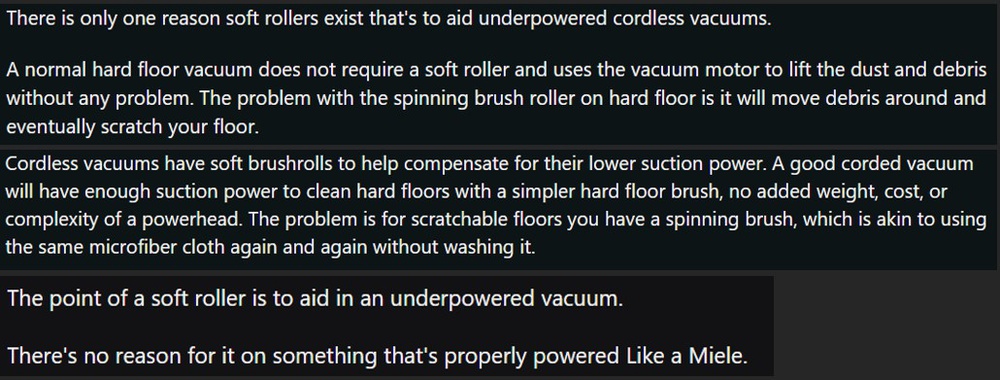
Yes, stick vacuums tend to have less airflow than canisters. However, our results show that soft rollers are better at picking up debris of different sizes than vacuums with higher airflow and suction. Despite generating less airflow and suction, vacuums with a soft roller head still perform better at picking up debris. Because of this, vacuums with soft rollers can use their power more efficiently. However, it's possible that they could scratch your floors.
What Makes Soft Rollers So Good On Hard Floors?
Vacuums with a good soft roller performed well in our test despite having lower airflow and lower suction than other alternatives. This could be explained by the way that the Dyson V15 Detect soft roller can compress to accommodate both large and small debris at the same time. The best soft rollers also have a line of carbon filament that can sweep into cracks. They can also be driven directly by an electric motor that spins the soft roller. Another advantage you can see in the picture below is that the distance from the ground to the top of the opening is very large. This prevents the head from pushing larger debris around and allows the vacuum to suck them up.
The last difference we saw with this roller compared to the competition is that the back of the head is pressed low to the floor. It's very low to the ground to make it easier to seal the airflow and suction in, compared to the Samsung Bespoke Jet, where the head is slightly higher.
At the back of the better-designed soft roller, there's a strip of the same fabric as the roller to help seal the debris inside the head. This prevents debris from being launched by the head toward your feet. In the next picture, you can see the blue strip below the roller that keeps the tiny particles inside the head.
What To Look For In A Head (And How Head Design Can Affect Debris Pickup)
Our testing shows that the presence of a brushroll, its material, and its other design choices will impact vacuum performance based on the needs you might have.
Brushroll material
As we saw with the soft rollers from Dyson, the material of the brushroll can greatly impact debris pickup. Other vacuum brands tend to use small nylon brushes placed on a roller in a V pattern or in a line. These brushes perform worse than soft rollers on hard floors, and generally, the brushroll should be turned off when vacuuming hard surfaces.
Newer stick vacuums from Dyson usually come bundled with a few different heads for cleaning different surfaces, including a soft roller for hard floors and a multi-surface "Digital Motorbar" head. The latter is used for carpets and has three different brush materials. There's a nylon brush line, an "anti-static carbon fiber filament" row, and a hard plastic row. All these different brush materials have a different purpose, which could explain the results we see in vacuums with this head design.
These heads are also very good at agitating the carpet to dislodge debris. As seen in this video of the Gen 5 Detect on low-pile carpet, you can clearly see the debris bouncing around.
Simpler head designs also perform well in our carpet tests if the vacuum has higher airflow. The Kenmore Intuition Bagged has a simpler roller with only two rows of hard nylon bristles, but it has higher airflow. The design doesn't need to be as intricate due to having high airflow.
The location of the belt and its impact
Vacuums tend to have two different ways to drive their brushrolls. The most effective one is to have a motor drive the roller, either directly or by a belt. The second way is by using the air generated by the vacuum to spin the roller; these are often called turbo nozzles. A directly driven brushroll removes the need for a belt. On the Dyson V15 Detect, the soft roller is driven directly by the motor using a shaft that extends into the roller. On this type of head, there's no need for a belt that would block the brushes on the brushroll.
Although a motor-belt-driven brushroll spins faster and provides more torque than an air-driven one, they have one flaw: the location of the belt. The belt drives the brushroll and can be hard to place on the roller. Some manufacturers put the belt on one side of the head to minimize its impact on debris pickup. An example of this is the Miele U1 Powerline. On this vacuum head, you can see the black belt on the right-hand side.
You can see a small line of pet hair on the carpet that's separated from the rest of the debris due to the belt on the roller.
Other manufacturers put the belt near the middle of the roller to simplify the design and to clear away debris in corners or along walls more easily. However, this can lead to inconsistent results. An example of this is the BISSELL Pet Hair Eraser Turbo Plus. To show why the belt is placed in the middle, we opened the BISSELL to expose the internals of the head. You can see below that there's a motor for the brushroll, which is connected to the roller with a belt.
In this test, we can see a line of pet hair that wasn't picked up due to belt location. Where there's a belt, there can't be any brushes on the brushroll, and thus, no debris is picked up along that line. The problem is also seen in other tests, but the example of pet hair is the most obvious. Although this design choice impacts our results because we vacuum in a straight line, the impact of the belt location might be mitigated by vacuuming the same area more than once. As for vacuums with a belt on the side, the effect is the same, but it doesn't look as bad since it doesn't leave a trail of hair in the middle of our test area but could lead to annoying debris pick-up in corners or along walls.
A good example of an air-driven head is the TurboTeq from Miele. It works by spinning an impeller with the airflow generated by the vacuum and transferring that spinning motion with a belt. This photo shows the impeller in the TurboTeq from Miele.
The hard equilibrium of head height
Vacuums with heads with no brushrolls and a very low profile performed poorly in our test. While having a lower head helps with creating a lot of suction, the counterpoint is that debris higher than the head will be pushed around instead of being sucked up. This is clearly shown in our test with the Miele C3 with the SBD 285-3 head, which excels with sand but struggles with whole pieces of Cheerios cereal.
Having a higher head will make it lose its usable suction that we can measure at the head. With the Miele U1 Powerline, we measured low head suction, as seen here.
The brushroll requires a higher clearance to work on carpet. The problem comes when you vacuum hard floors. To prevent the hard bristles from scratching your floors, it's recommended to turn them off, but by turning them off, the vacuum relies only on airflow and suction to pick up debris. If the head of the Miele U1 Dynamic Powerline was designed to sit lower, it would have more useful suction at the head, but it could struggle on higher carpet. The front of the U1's head is super low, but the section where the hole is is too high. This might explain the drop in pressure from the hose to the head.
The problem with bristles on canister heads
Entry-level canister vacuums tend to have a combo head with no electric brushroll. Canister vacuums seldom come with electric brushrolls as this would complicate the hose and tube design. To have an electric brushroll, you need to have an electric cable that brings the electricity from the canister all the way to the head. This increases the cost of the units because the hose is normally not electrified. Premium brands like Miele offer some models with an electric hose to have an electric-driven brushroll, but they come at a higher price. We don't see this with stick vacuums since the tubes are shorter and sturdier than typical canister hoses. Heads with no brushrolls, like the SBD 285-3 from Miele, only work with airflow and suction to lift the different debris from the surface. They always have bristles on the front and sometimes all the way around the edges. The picture below is an example of the Miele C3 SBD 285-3 head. We can see here that the airflow pulls in debris through the channels and from the front opening.
As seen in the front view picture, it's too low to let Cheerios in. If it can't fit underneath the head, chances are that it'll be pushed and then obstruct the head and prevent other debris from being sucked up.
As with any design choice, these bristles also come with negative aspects. The distance from the floor to the top of the opening is limited due to hair not being the best way to seal. The low height makes it likely to push around big debris. This is the major downside of canister vacuums that only come with heads without soft rollers. They are great vacuums, but they have a harder time picking up large debris compared to vacuums with a soft roller or brushroll for carpets. The bristles on a head are usually castellated, meaning they have slots, which helps with large debris when the holes are large enough. Narrower grooves can end up with debris stuck in them, as seen here on the parquet twister of the Miele C3.
Taking all this into account, we saw that both brush strips can be removed on the SEBO Premium Parquet Brush. SEBO says on their website that the brushes can be removed to fit different cleaning needs. Removing the brushes creates a quarter-inch gap where bigger debris can fit without pushing through the bristles. An option to remove the bristles could be an alternative to soft rollers if you don't have an electrified hose. This extra function removes the problem of larger debris being pushed around. The picture on the left shows a Cheerios cereal in front of the SEBO parquet head with hair. The one on the right shows the same head with the bristles removed to provide more clearance for larger debris.
After seeing that the SEBO Premium Parquet Brush could be modified to remove its front bristles, we fitted it on our Miele C3 to see the difference made by using a head with no bristles at the front. The Premium Parquet Brush performs better than other official Miele heads, putting the final nail in the coffin of the impact of head design on performance. Although the Premium Parquet Brush performed well, it's still underperforming compared to the soft roller test. The head had a problem with smaller debris since it's higher off the ground, so the airflow and suction are lost. The soft roller helps in those cases by spinning the debris inside the head.
User maintenance
Up until now, heads with brushrolls, soft or hard, would seem to be the perfect solution. However, while looking at head design, we must also discuss maintenance and ease of use. In general, more moving parts can cause more problems. As an example, an electric brushroll head has more failure points than a head with no moving parts. Having another motor to drive the brush or a belt means more parts that might need replacement, and you're more likely to throw away an attachment if it's especially difficult to repair. Pure suction heads, like the SBD 285-3 head bundled with some Miele C3 models, have almost no moving parts, so there are fewer components that could fail.
Another downside of a brushroll is tangled hair on the roller. When this happens, scissors are usually required to cut it away. This issue will never affect heads with no brushes, as vacuuming the hair with the hose will eliminate most of them. Considering the quality of life and maintenance is also very important when buying a vacuum cleaner.
Conclusion
The results we gathered from our performance rework were a major change for the Miele C3. This major change in score triggered an investigation into what impacts debris pick-up performance. We rolled up our sleeves and looked at all the differences that exist between different vacuums. Here at RTINGS.com, we have the unique privilege of being able to test a large number of different vacuums and compare them using the same test parameters. Because of this, we could compare them on countless points to try and spot what made a vacuum perform better in our test. The test results show that head design is paramount to a vacuum's performance. Using all the differences we looked at, we can know what to look for when buying a vacuum.
Purchasing a new vacuum that best suits your needs can be a big decision. We tried to target what makes a vacuum good to help you make a better buying decision. We proved that airflow and suction weren't the most important factors when looking for good debris pick-up performance. More importance should be given to how the main head is designed and what other heads and accessories come with the vacuum. We are confident that having a floorhead that's suited for the surface and debris type you plan to clean is more important than just relying on high airflow and suction. Of course, another thing to remember while looking for a new vacuum is to think of the user maintenance required with the vacuum. A head with rollers will always require more maintenance than a head without any brushrolls, which could make for a more tedious owner experience or even shorten the product's lifespan.
Comments
Forget Airflow And Suction: For Vacuums, It's All In The Head: Main Discussion
What do you think of our article? Let us know below.
Want to learn more? Check out our complete list of articles and tests on the R&D page.
- 21010
How did you attach a Dyson soft roller to the C3??
Hi James 365!
Thats a good question! Short answer is: we succeeded with a lot of tape, time and effort.
Here is the long answer, First, we dissassembled the Dyson V15 Stick to remove the wire inside that controls the brushroll. We then taped the V15 head to the end of the Miele C3 stick. The next issue was finding a way to have the Dyson’s Soft Roller to spin. We achieved this by connecting the wires directly to the Dyson V15 vacuum body/dirt compartment. The Dyson V15 vacuum body was then taped to the Miele C3 stick.
When we want to vacuum, we turn on the Miele C3 and press the button on the V15 head to make the brushroll spin and then vacuum the debris.
Thanks for your interest in this! I had a lot of fun tinkering with it.
Pierre-André
- 21010
How did you attach a Dyson soft roller to the C3??
- 54340
I really enjoy the creative testing of the equipment… But it physically hurts to see you use the parquet twister improperly (like a broom) instead of as it’s intended: as a vacuum. You’re meant to lift the head periodically if you have giant debris… To suck it into the wand directly. Weird you didn’t just use the electrohead for the Miele canister instead of getting a U1, but I guess the U1 deserves love too. You also seem to ignore the problem that soft roller heads (basically anything that isn’t a parquet twister like tool) introduce: rubbing and eventual scratching of floors from the hard casing of the roller and their tiny accessory wheels to keep the head moving. Related: wesselwerk makes an air driven roller tool for hard floor cleaning for lower powered devices. Finally, it’s interesting you excluded the crevice test from this battery considering that’s one of the most important aspects of hard floor cleaning (from the corners or between floorboards). I imagine the soft roller and Miele would still demolish. Also the assertion that hard floor roller tools are for weak vacuums comes from the industry itself, not just reddit comments (re the wesselwerk tool, and even Dyson including a high quality parquet tool with their uprights but not with the v15). Love getting new data out of y'all, but sometimes the parameters and inclusion/exclusion criteria seem wack as hell (inconsistent).
Hello superturtle116,
Thank you so much for your thoughtful feedback and for taking the time to read our article. I appreciate your insights.
Regarding the parquet twister: we noticed that not all vacuums required lifting their heads to pick up all the debris. To ensure a fair comparison across all models tested, we standardized our procedure by not lifting the heads. We understand that this change might raise questions if not viewed in full context. Our goal was to maintain consistency and fairness in our testing process, ensuring that no vacuum was at an advantage.
Miele C3 not using the electro head: Unfortunately, we do not have this accessory in our bundle, which prevented us from including it in the test. Although using the electro head might yield better results on certain surfaces, the brush roll on hard floors could potentially scatter debris, as evidenced in our tests with the turbo nozzle. To test with the electro head, we would need to buy another Miele C3 bundle, but we do not currently buy multiple bundles of the same product.
Scratching floors: up to now, we haven’t seen any scratching in our tests. We have tested most typical head designs on the same floor, and scratching wasn’t an issue. However, the fact we didn’t experience this in our setup doesn’t mean it’s impossible to happen.
Wesselwerk air-driven roller: we tested the Miele-branded version in the article, the results were marginally better than the combo head but our results show that it didn’t come close to the Dyson V15 soft roller score.
Regarding the cracks test: you are correct in highlighting its importance. Although interesting, we didn’t discuss it in our R&D article as it was unfortunately beyond the article’s scope. You’re also right about the Miele and the soft rollers being good, in fact, they are amongst the best. If you want to see more results of the cracks test, I have prepared a table here with the test results of the cracks test.
About soft rollers: our findings suggest that they utilize the limited power of stick vacuums more efficiently compared to traditional parquet heads. This is because they are designed to optimize performance even with lower airflow and suction, making them a preferable choice in a lot of scenarios.
Thank you for sharing your perspective as it helps us refine our processes and future articles. Our aim is to make our testing methods as transparent and understandable as possible, recognizing that not all parameters are immediately or easily apparent.
Thank you once again for engaging with us. Please feel free to share any further thoughts or suggestions you might have.
- 43230
I really enjoy the creative testing of the equipment… But it physically hurts to see you use the parquet twister improperly (like a broom) instead of as it’s intended: as a vacuum. You’re meant to lift the head periodically if you have giant debris… To suck it into the wand directly. Weird you didn’t just use the electrohead for the Miele canister instead of getting a U1, but I guess the U1 deserves love too. You also seem to ignore the problem that soft roller heads (basically anything that isn’t a parquet twister like tool) introduce: rubbing and eventual scratching of floors from the hard casing of the roller and their tiny accessory wheels to keep the head moving. Related: wesselwerk makes an air driven roller tool for hard floor cleaning for lower powered devices. Finally, it’s interesting you excluded the crevice test from this battery considering that’s one of the most important aspects of hard floor cleaning (from the corners or between floorboards). I imagine the soft roller and Miele would still demolish. Also the assertion that hard floor roller tools are for weak vacuums comes from the industry itself, not just reddit comments (re the wesselwerk tool, and even Dyson including a high quality parquet tool with their uprights but not with the v15). Love getting new data out of y'all, but sometimes the parameters and inclusion/exclusion criteria seem wack as hell (inconsistent).
- 65450
Very enlightening. I appreciate the effort that went into this.

